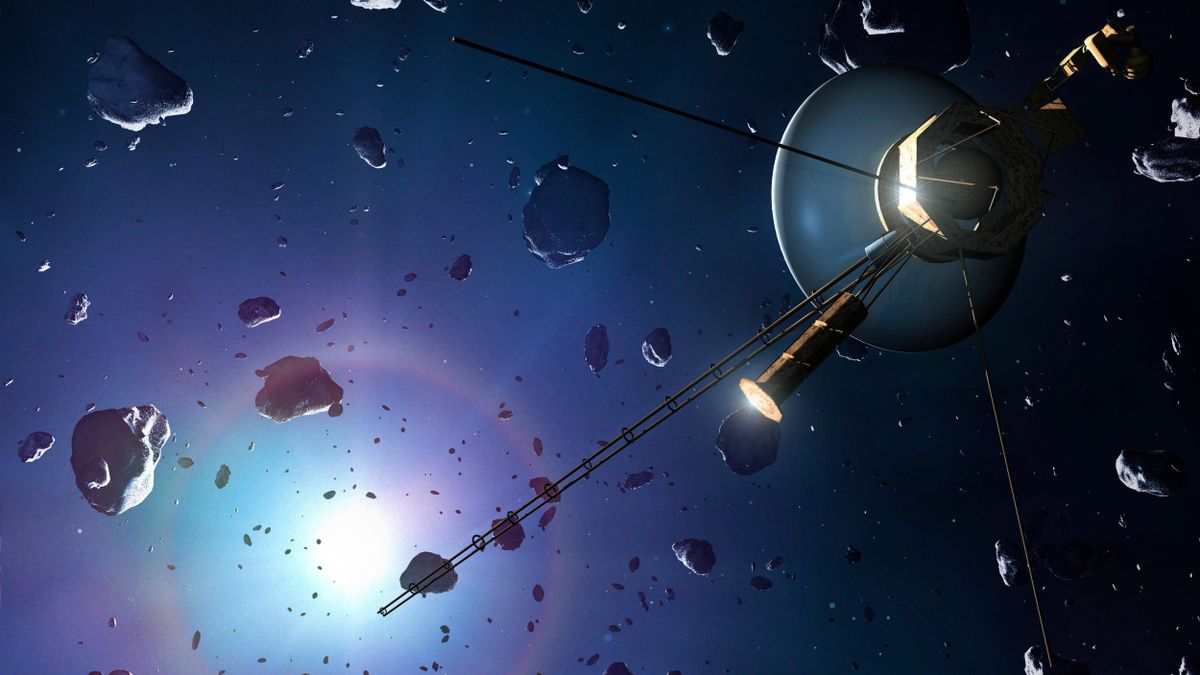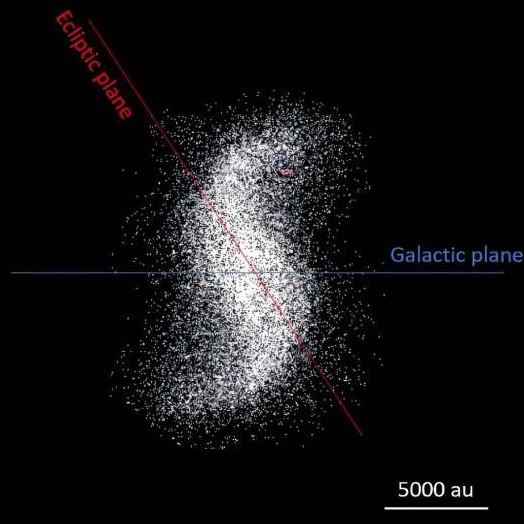
The Oort Cloud, a fascinating layer of icy bodies situated at the outer limits of the solar system, may possess spiral arms that give it the appearance of a miniature galaxy, according to recent research findings.
The precise configuration of the Oort Cloud and its interaction with external forces remains largely unknown. A new model proposed by scientists suggests that the inner composition of the Oort Cloud resembles a spiral disk. This significant discovery was shared on February 16 in a paper published on the preprint platform arXiv, indicating that it has yet to undergo peer review.
Initially, the Oort Cloud formed from leftover materials from the solar system’s giant gas planets—Jupiter, Saturn, Uranus, and Neptune—following their creation approximately 4.6 billion years ago. Many of these remnants are large enough to be classified as dwarf planets.
As the planets orbited the sun, their gravitational forces propelled excess matter far beyond Pluto’s trajectory, leading to the current placement of the Oort Cloud. The inner edge of this enigmatic structure is estimated to be located between 2,000 and 5,000 astronomical units (AU) from the sun, while the outer edge spans between 10,000 and 100,000 AU. For context, one astronomical unit is roughly 93 million miles (or about 150 million kilometers), which is the distance between Earth and the sun.
Related: Planet Nine: Is the quest for this elusive planet nearing completion?
Given its vast distance, even NASA’s Voyager 1 spacecraft, traveling at an impressive speed of around one million miles per day (1.6 million kilometers), will take approximately 300 years to reach the Oort Cloud and another 300,000 years to exit it.
This significant distance renders the bodies within the Oort Cloud too small and dim to be directly observed, even with advanced telescopes. The primary evidence for its existence comes from long-period comets, which are icy and dusty bodies that are ejected from the cloud, entering orbits around the sun due to gravitational nudges.
Spirals Within Spirals?

To further explore the possible structure of the Oort Cloud, the researchers drew on orbital data from comets in conjunction with gravitational influences from within and outside our solar system. This allowed them to construct a detailed model of the Oort Cloud’s arrangement.
A vital aspect of understanding the Oort Cloud’s shape involves the concept of “galactic tide.” This term refers to the gravitational effects exerted by stars, black holes, and the center of our galaxy, which significantly influence the Oort Cloud’s objects, yet remain hidden from those closer to the sun, where our star’s gravity dominates.
When the researchers simulated this model using NASA’s Pleiades supercomputer, they discovered that the inner region of the Oort Cloud—its most densely populated area, located 1,000 to 10,000 AU from the sun—bears a striking resemblance to the spiral arms of the Milky Way Galaxy. Their findings indicate that the arms of this inner Oort Cloud stretch approximately 15,000 AU from end to end.
To validate this intriguing spiral structure through observation, scientists would need to directly track the objects or isolate their reflected light amidst numerous other celestial bodies. Both tasks present significant challenges and currently lack allocated resources for exploration.
Nevertheless, the researchers advocate for increased observation efforts, suggesting that gaining insights into the origins of comets and the evolutionary history of our solar system is essential for understanding the ongoing influence of the Oort Cloud within our cosmic neighborhood.









